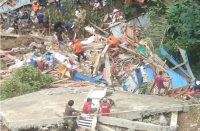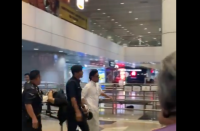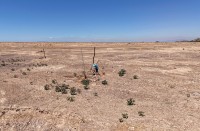
YANGON, Myanmar (Reuters) — During the decades of military rule, cars ownership in Myanmar was reserved to a select few and traffic jams in Yangon, then the capital, were unknown.
But now, after six years of civilian rule, cars are no longer a privilege and vehicles of all shapes and sizes fight for space on the roads.
Rush hour gridlocks are a daily occurrence and set to worsen as the appetite for cars and mobility is outpacing outdated infrastructure and haphazard driving.
Government data shows that there were around 500,000 registered automobiles nationwide in 2015, up 90 percent from 2012 when import regulations were lifted. The bulk of these cars are in Yangon, Myanmar’s largest city with a population of roughly 4.5 million.
At the T.V.1 Driving School, enrolment each year has doubled since 2010 to over 10,000 in 2016. Many take the one-month course to hit the roads in their new cars, while others sign up to become taxi drivers.
To cater to the legions of new drivers and to comply with recently-introduced restrictions on second-hand and right-hand drive cars, swank showrooms are displaying the latest models.
Car dealer U Htay Aung said he’s seen a steady increase in sales but insists there’s room for more cars in Yangon despite traffic jams.
“There are not many cars in Yangon. Actually, the traffic problem is caused by car drivers not following the rules. they brake without discipline, there is no car parking and there are road vendors. These reasons cause 50 percent of the traffic problem,” he said.
With parliamentary by-elections looming in April, leader Aung San Suu Kyi’s National League for Democracy (NLD) is keen to alleviate the situation by overhauling the chaotic network of some 4,000 rickety public transport vehicles, half of them in use for more than 20 years, according to government data.
The new bus service that started on January 16 is aimed at reducing traffic and commute time of some two million commuters who have complained the buses are overcrowded, schedules unpredictable and driving unsafe. It also has regular bus lines, timetables, and salaries for drivers.
The new system would also bring down and coordinate the number of bus lines to 61 from some 300.
“I think the new bus system can help the traffic problem because previously, different buses were running on the same route and that caused traffic jams, but now it’s not like this, as the buses will have their own routes,” said a commuter, 66-year-old retired government officer, Ohn Myint.
The reform is the largest public-facing project with immediate impact on the city where Suu Kyi won big in historic 2015 election, and a major test for her ability to meet the sky-high expectations of the public.
But an urban planning expert from Yangon Heritage Trust, says attempting to fix one form of transport is not enough.
“We have to think not only of the bus system but also equally, think of linking bus, river and train transportation. This is better and can affect the people quickly,” Moe Moe Lwin said.
Roads also need to be widened and improved to handle the traffic increase and parking space needs to be provided in Yangon and other big cities.
A World Economic Forum report from 2016 said Myanmar’s roads were ranked 134th out of 144 countries in term of quality, far below neighbors Cambodia which was 93rd and Vietnam, 102nd.







